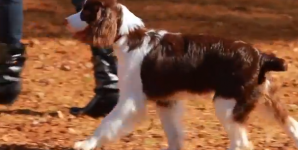Guide to loose leash walking

Guide to loose leash walking
While getting your dog not to pull isn’t complicated, it does require consistency. In this article I’ll let you in on the top three most likely reasons your dog is a puller and the things you need to stop and start doing if you want things to change.
1) Don’t reward pulling
Dogs a fast learners, especially when it comes to reinforcement. And the more frequent you reinforce something, the more “stuck” the behaviour will become - good or bad.
Your dogs number one goal when going on walks is to move. Dogs typically want to investigate everything around them, be it smells, other dogs or anything else. Since you let your dog move forwards when the leash is tight, the dog will quickly realise that when he pulls he is allowed to move. In other words, the dog understands in his own way that a tight leash = moving forward.
Just think about how many times you have reinforced this behaviour. Is it any wonder that your dog pulls?
To change this behaviour you need to stop rewarding it. In short, when the dog pulls - you stop - when he calms down - you walk. Don’t yell, don’t jerk or don’t even acknowledge him. Just wait for him to calm down, then start moving again.
Depending on how ingrained pulling behaviour is in your particular dog (and of course the temptation of what he is pulling towards), you may have to repeat this process many, many times. This is seldom an overnight fix. But eventually he’ll start to get the picture, and once he does, the behaviour will last - unlike what you see in most “quick fixes” that stop working after a short while.
Remember, it’s not his fault he pulls - you taught him, after all.
2) Get an anti-pull harness
Stop using regular collars, especially choke chains, as they are even more prone to causing serious damage.
Go to your nearest pet store and ask them to show you an anti-pull harness. Unlike a harness that connects in the back, which gives your dog a lot of power to pull, the anti-pull variation connects in the front - namely across the dogs’ chest.
As soon as the dog pulls, he’ll be pulled to the side and off balance. This will take a way a lot of his force, which in turn serves two important functions. 1) The dog will gradually learn that pulling isn’t that effective, and 2) it will become much, much easier for you to control him when he does pull.
Using this type of harness effectively eliminates the very real threat of collapsed tracheas, nerve damage and so forth.
3) Reward loose leash walking
Most dogs don’t work for free. That’s why you need to reward them when they do good. Find a motivator - be it food, play or whatever else he likes - and make sure you reward him when he’s walking without pulling.
The idea is to make him understand that walking calmly next to you is rewarding.
Video training: step by step guides to loose leash walking
Tip! If the videos don’t work, follow these links to see them directly on youtube:
Youtube: Loose-Leash Walking Inside
Youtube: Loose-Leash Walking Outside
Be consistent
Dogs thrive on consistency. If you let them pull some days, but not on others, I guarantee you that it will take a very long time to teach a dog not to pull. In fact, you may never be able to do it.
That’s not to say there won’t be times where pulling won’t happen, just try to keep it at a bare minimum.
Comment on this article